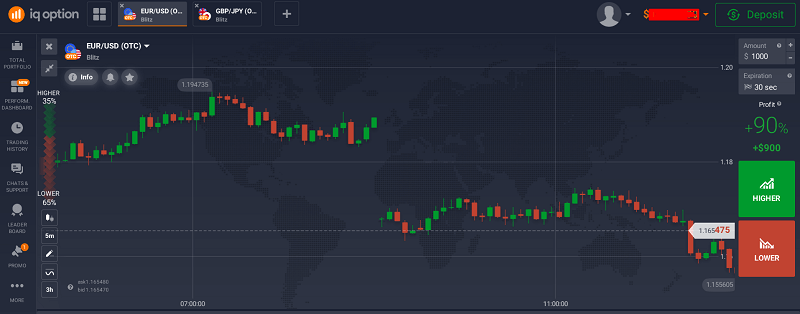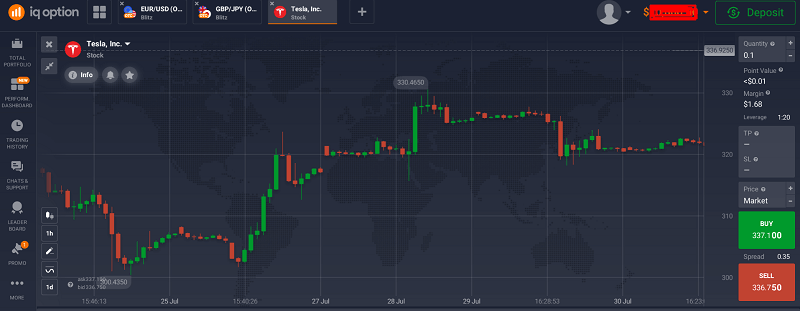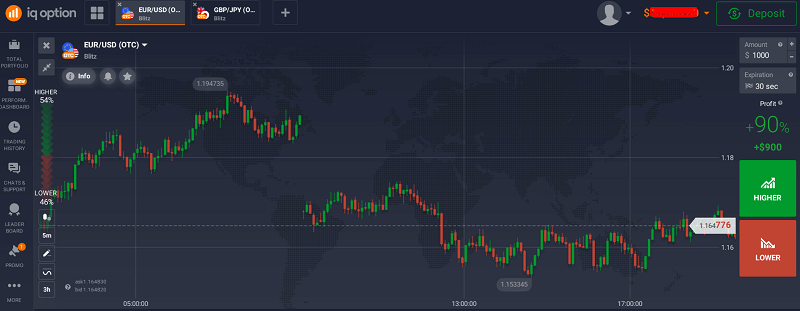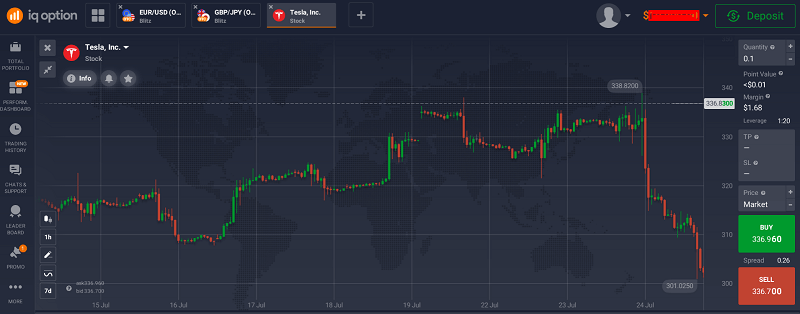Chart Gaps on IQ Option: Trading Gaps Strategy & How to Exploit Them

I still remember the first time I noticed a gap on the IQ Option chart.
It was a Monday morning. I’d just logged in, coffee in hand, half-asleep and ready for a slow start.
But instead of the normal smooth candlestick flow, I saw a huge empty space on the EUR/USD chart. The Friday close price was far below where Monday opened.
At first, I thought the platform had glitched. Then I realised — this was a chart gap.
And I knew from old trading books that gaps can sometimes be golden opportunities.
But on IQ Option, where trades can be as short as 1 minute or as long as a few days, I wasn’t sure if they even mattered.
I decided to find out the hard way — by trading them with real money.
Open your IQ Option account and start observing live market gaps — see them happen in real time here.
What Exactly is a Chart Gap?
A chart gap happens when there’s a sudden price jump from one candle to the next, leaving an empty space on the chart.
The market literally “skips” over certain prices. This usually happens because the market opens after a break with strong buying or selling pressure.
Most gaps occur over weekends when forex markets are closed. But they can also appear after major news events, even intraday, especially in volatile assets.
On IQ Option, you can spot them clearly in:
- Forex
- Stocks
- Crypto (less common since it trades 24/7, but possible after big volatility)

My First Gap Trade on IQ Option
That Monday morning gap on EUR/USD looked too tempting to ignore. The price had gapped down by almost 20 pips, then started climbing in the first 10 minutes after open.
I remembered a common theory: gaps often “fill”, meaning the price returns to the pre-gap level before continuing its trend.
So I placed a 15-minute call option, betting that price would rise back into the gap zone.
And you know what?
It worked. My trade closed in profit, filling most of the gap. I felt like I’d just unlocked a hidden cheat code.
But as you’ll see, it’s not always that simple.
The Different Types of Gaps (And How I See Them on IQ Option)
I’m not going to give you a textbook definition dump, instead, here’s how I personally classify the gaps I see in my IQ Option trading.
Breakaway Gaps
These appear when the price breaks out of a consolidation zone with huge momentum. On IQ Option, I’ve seen these after a stock’s earnings release or during forex market open after a weekend with big geopolitical news. They often don’t fill quickly because they signal the start of a strong move.

Continuation Gaps
These pop up mid-trend. For example, in a strong bullish move on EUR/JPY, a continuation gap might form before price keeps going up. They’re more of a “momentum booster” than a reversal sign.

Exhaustion Gaps
These happen at the end of a trend, right before a reversal. They look strong but quickly fade. I’ve lost money on these before when I assumed the momentum would continue.

My Losing Gap Trade — The Reality Check
A week after my first win, I saw a big upward gap on GBP/USD on Monday open.
The theory in my head screamed: “It’ll fill! Short it now!”
So I did.
But instead of reversing, GBP/USD kept flying upward for another 50 pips before stalling.
My trade expired way before the market thought about filling the gap. Loss booked. Lesson learned.
That’s when I realised, gaps aren’t all the same. Some fill quickly, others take hours, and some don’t fill at all.
How I Now Trade Gaps on IQ Option
Over time, I developed a simple 5-step process that works for me.
It’s not about taking every gap. It’s about filtering them.
Step 1 – Spot the Gap in Context
I don’t just trade any gap I see. I zoom out and check where it’s forming — near strong support/resistance? In line with the bigger trend?
Step 2 – Check the Cause
If there’s news behind the gap (like Non-Farm Payrolls, central bank announcements, or stock earnings), the reaction can be more explosive and unpredictable.
I use an economic calendar before market open.
Step 3 – Watch First, Trade Later
I’ve learned that jumping in right after a gap is risky. I wait for the first 5–15 minutes to see if the price tries to fill the gap or pushes further away.
Step 4 – Plan the Expiry Time
On IQ Option, expiry time matters a lot. Too short, and I get caught in noise. Too long, and momentum dies. For forex gaps, I often use 15–30 minutes expiry. For stocks, I might go longer.
Step 5 – Manage the Risk
I never risk more than 2% of my balance on a single gap trade. If it fails, I move on — there are always more.
My Favourite Gap Setups That Actually Work
Here are the ones I’ve tested the most on IQ Option:
- Small Gaps in Range-Bound Markets — These often fill quickly and give high win rates on short expiries.
- Breakaway Gaps With News Confirmation — When I see a breakout gap after news, I sometimes ride the momentum instead of betting on a reversal.
- Fake-Out Exhaustion Gaps — If the market overreacts, I look for reversal signs like RSI divergence before entering.
Common Mistakes I Made (And See Others Make)
- Treating all gaps as the same
- Trading too early without confirmation
- Using too much capital on one trade
- Ignoring the bigger trend
- Assuming all gaps will fill within minutes
- Avoid chasing gaps, it can trigger Martingale-style overtrading.
Can You Really Exploit Gaps on IQ Option?
Yes, but only if you approach them with discipline.
The market doesn’t owe you a “fill” just because a gap exists.
Sometimes the smartest thing you can do is watch it happen and not take a trade at all.
If you’re curious, start by just observing how gaps behave on your favourite assets for a week.
Only then think about trading them.
Sign up on IQ Option now and watch for your first gap in the live markets, practice spotting them before risking money.
FAQs
Do gaps happen on weekends only?
No. While weekend gaps are common in forex, intraday gaps happen after news events or on stocks during market open.
Do all gaps get filled?
No. Some fill quickly, some take days, and some never fill at all.
Which assets show gaps most often?
Forex and stocks are the most common. Crypto gaps are rare but possible.